
GAS VS. ELECTRIC RANGE: WHICH IS BETTER FOR ME?
When you’re shopping for a new range, there are many things to consider. One of the most important factors is the fuel type. Gas ranges have a gas cooktop and gas oven, while electric ranges have an electric cooktop and electric oven. Both have benefits: Gas stovetops offer quick and responsive heat adjustments, enabling you to easily switch between heat levels, and electric ranges provide a consistent, dry heat that is well-suited for baking and roasting.
When comparing different types of stoves, it’s important to consider the benefits of gas vs. electric ovens and gas vs. electric cooktops to get the full picture of the appliance and its capabilities.
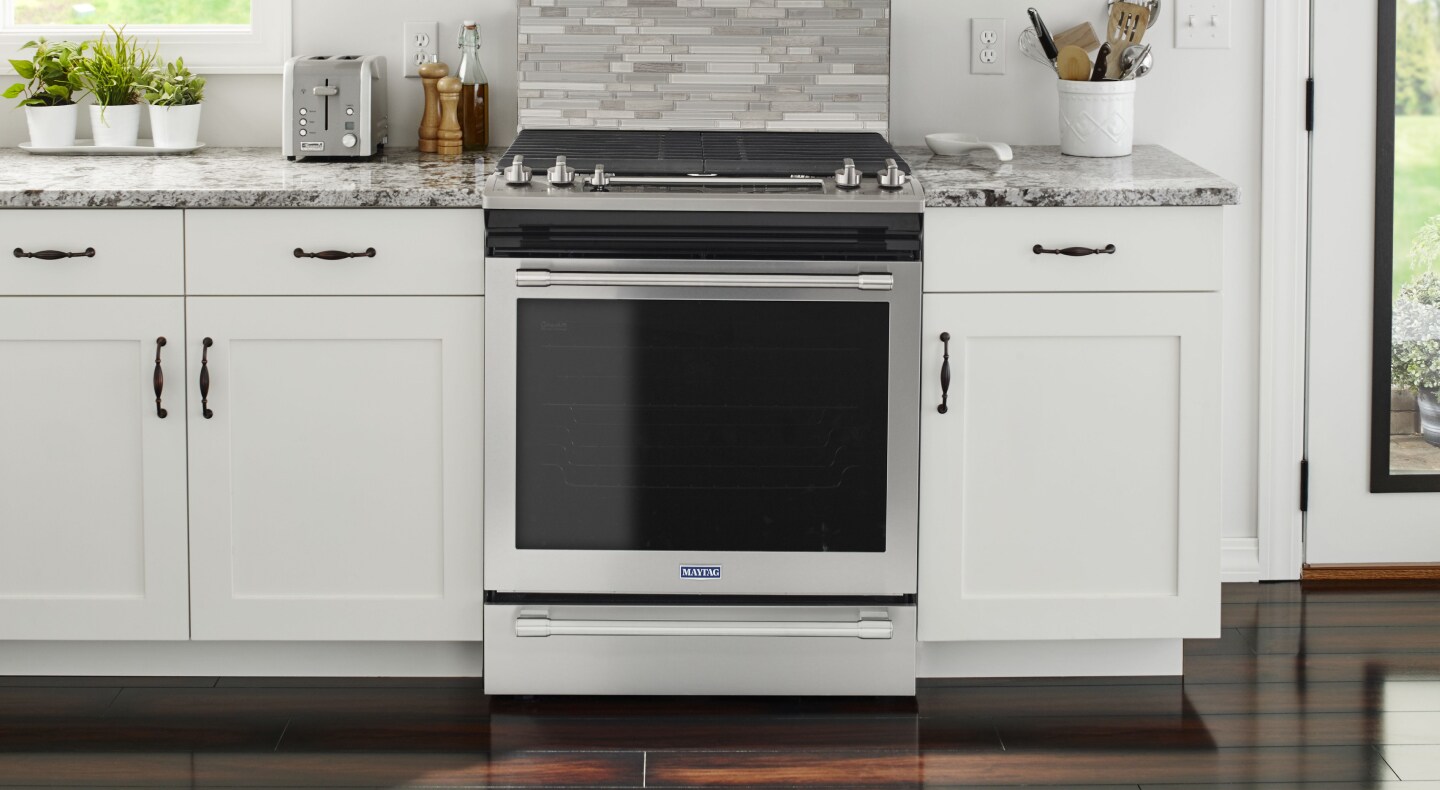
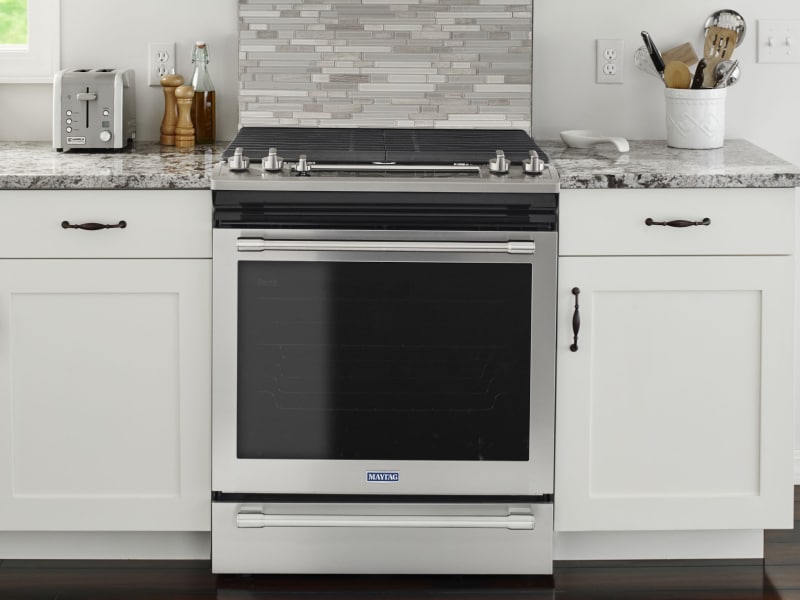
WHAT IS A GAS RANGE?
A gas range is instantly recognizable by its open flame, which is present both on the stovetop and inside the oven. The stovetop burners come in various types, each offering different heat levels that can be adjusted by changing the flame size. This allows for tasks like melting, simmering and frying. Within the oven, the flame intermittently cycles on and off to help maintain the optimal cooking temperature.
It's worth noting that a dedicated gas line is required to use gas ranges, range tops, or cooktops, but one can be installed by a professional if it's not already in place. Additionally, gas ranges and cooktops are connected to an electrical outlet to power the electric ignitor and control panel.
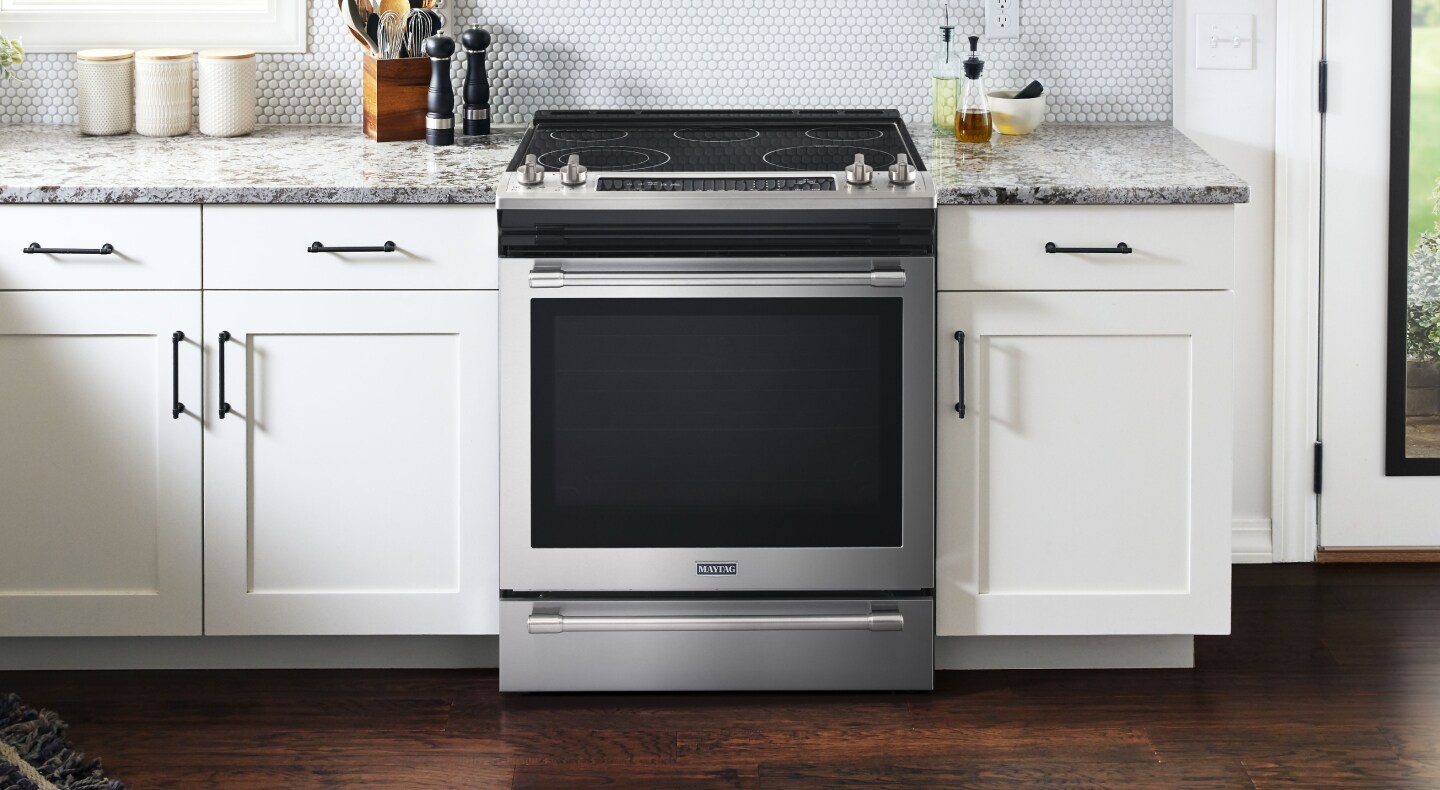
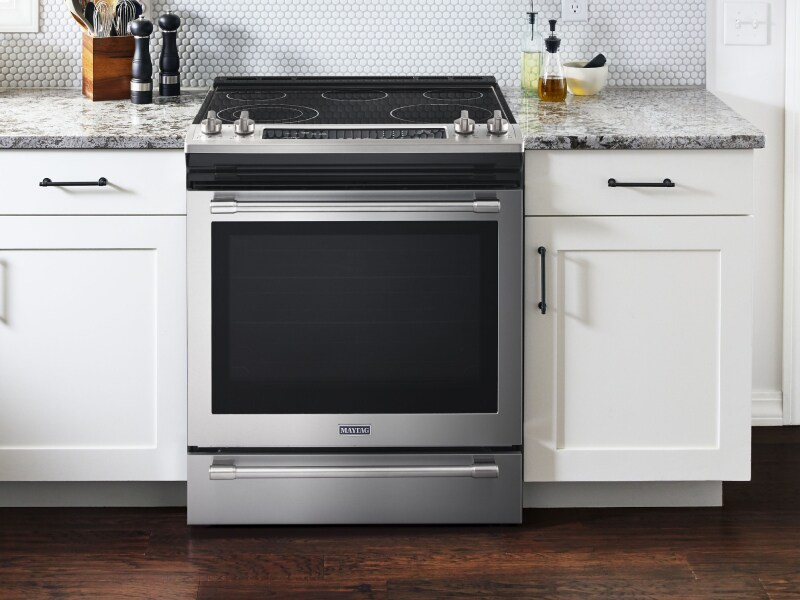
WHAT IS AN ELECTRIC RANGE?
Electric range stovetops are commonly equipped with a smooth, flat cooking surface, which is typically made of a ceramic-glass blend. They usually contain heated metal coils that transfer heat to the cookware through direct contact with the bottom of the pan. Similarly, the metal coils located within the oven generate heat and promote consistent temperatures throughout the cavity.
The range serves as a central hub for cooking and requires a 220 or 240-volt outlet, as opposed to the standard 110-volt outlets found in other rooms. Nevertheless, it's probable that your kitchen already has the necessary hookup.
GAS AND ELECTRIC RANGE FEATURES
There are many benefits to cooking with gas or electric stoves. Check out our list of key features and benefits below.

GAS RANGE BENEFITS
Gas ranges are highly favored by cooking enthusiasts who are looking for a wider range of stovetop techniques, or highly responsive temperature control. Gas heat provides a hands-on experience for seasoned cooks who are comfortable manipulating an open flame to achieve their desired results. Here are some advantages and opportunities:
Responsive control over the temperature and flame on the cooktop. Quickly adjust your heat level.
Gas burners typically have a ceramic cap to keep out spills and debris, while grates are usually removable for easy cleaning.
Gas fuel can introduce moisture into the oven.
Fast oven pre-heating means you can get your dishes into the oven sooner.
Allows you to char or grill food on the open flame cooktop. An open flame can also reach up the side of sculpted pans like woks or skillets.

ELECTRIC RANGE BENEFITS
Electric ranges are also a great option for your kitchen because of their easy-to-clean surface, easy installation and much more. You might be surprised by all the different ways an electric range can bolster your cooking skills:
Smooth, easy-to-clean ceramic cooking surfaces are available on select models.
Flat cooktop surface offers more stability for certain pots and pans.
Frequently easier to install since they plug into an electrical outlet and don’t require a gas hook-up.
Oven heating elements cycle on and off more often to provide more consistent heat within the oven cavity. This can result in more precise temperatures within the oven and fewer fluctuations. Learn more about how ovens heat up.
COMPARING GAS VS. ELECTRIC STOVE BENEFITS
| FEATURE | GAS | ELECTRIC |
|---|---|---|
| Stovetop heat |
Highly responsive |
Effective heat transfer |
| Stovetop versatility | Expanded techniques - char and grill with an open flame | Element flexibility - different shapes and sizes |
| Stovetop cleanability |
Grates must be removed to clean |
No grates, smooth surface is simple to wipe down |
| Oven heat |
Quick preheating |
Even, dry heat is good for baking and roasting |
DUAL FUEL RANGES
In addition to gas ranges and electric ranges, there are also dual fuel ranges, which have gas cooktops and electric ovens. Many home cooks consider this combination to be the best of both worlds. Another way to achieve your ideal combination is to purchase a wall oven and separate cooktop. Maytag offers both gas and electric wall ovens and cooktops as well as dual fuel ranges.
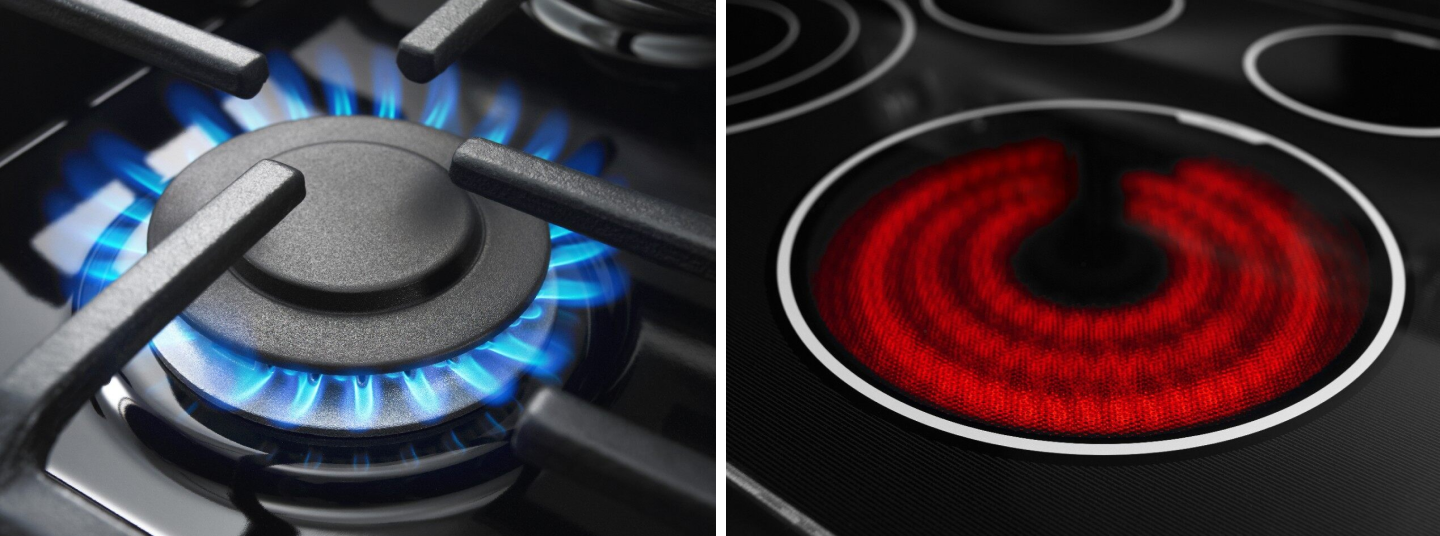

GAS VS. ELECTRIC STOVES: ADDITIONAL CONSIDERATIONS
Before purchasing a new range, you’ll also want to consider installation requirements and any additional features that you might want in your new appliance.
INSTALLATION
Electric ranges plug into a 220-240 volt electrical outlet in your kitchen, making ranges easy to install in most kitchens.
Gas ranges require a gas hook-up for installation. If you don’t have a gas line running to your home, professionally installing a gas line will be an additional cost. If you do have a gas line, determine whether your kitchen has natural gas or propane. To use propane, you’ll likely need a conversion kit.
CAPACITY AND FLEXIBILITY
Double oven ranges have two oven cavities built into a single range. This allows you to cook dishes that require different temperatures at the same time. Maytag offers double oven ranges in both gas and electric models. Learn more about stove sizes to find the right fit.
CONVECTION COOKING
For fast baking and thorough roasting, look for a range with a convection oven. Available in both gas and electric models, convection ovens have a fan that circulates hot air inside the oven to promote nicely browned and crispy skin on meats. Some convection ovens have an extra heating element, known as True Convection.
Learn more about the benefits of convection ovens.
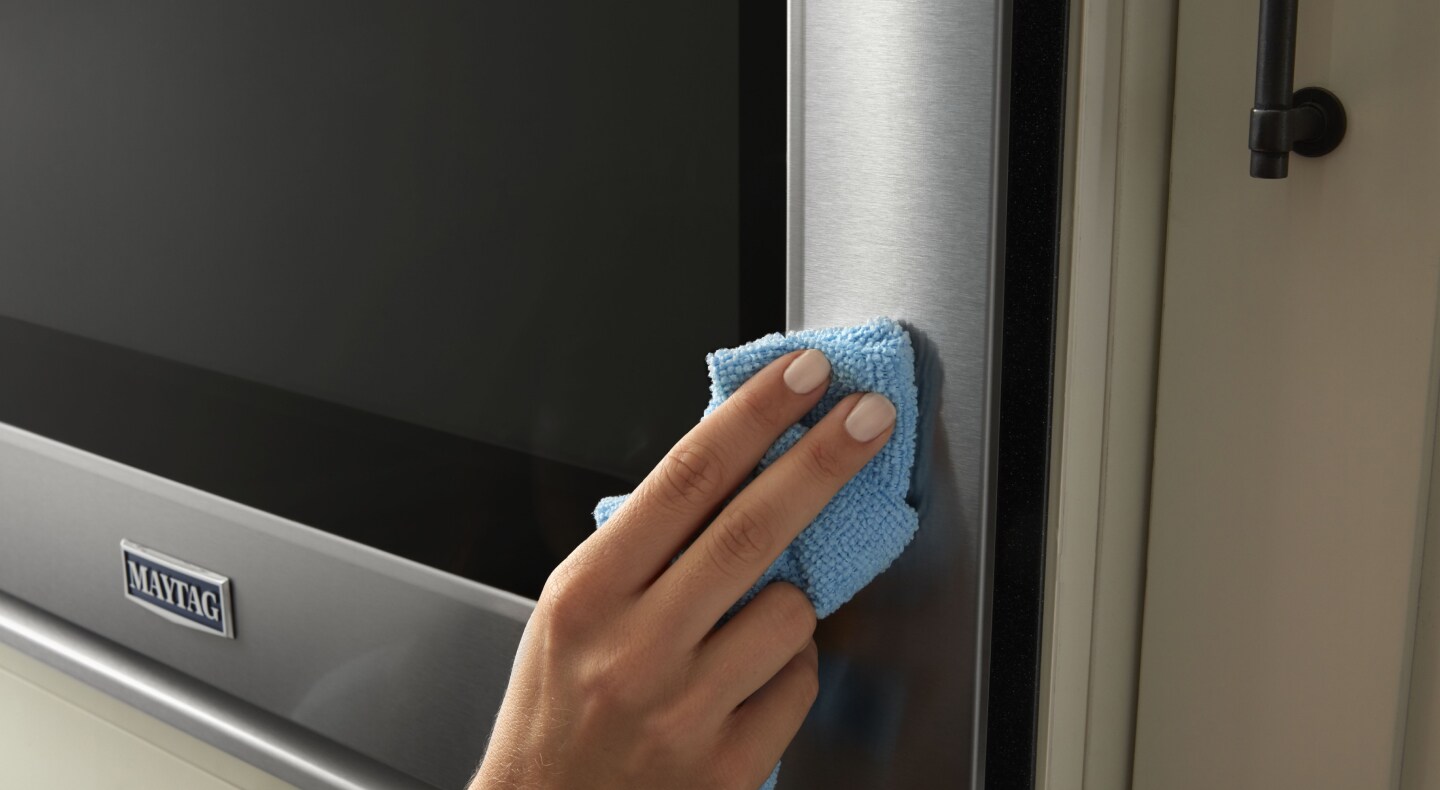
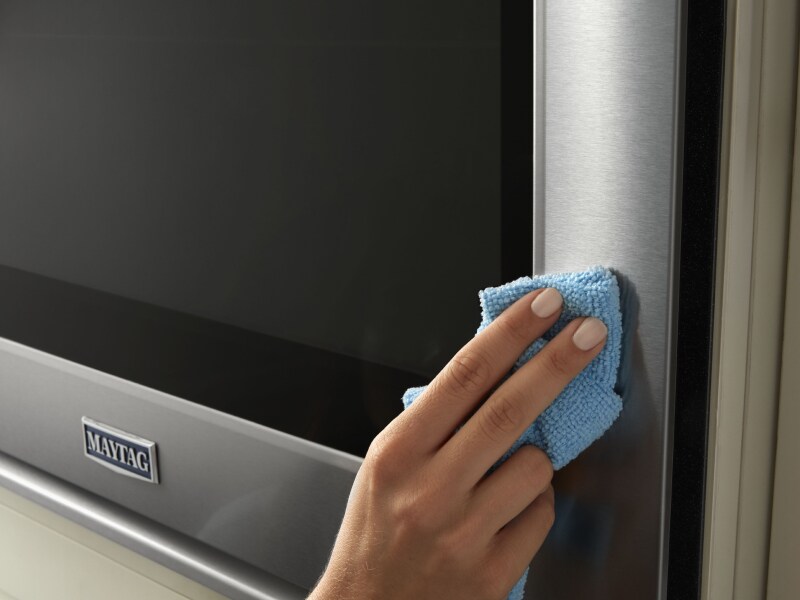
CLEANING
Some electric range models have a smooth surface that’s easy to wipe off. It’s also easy to remove electric stove burners to clean under them. Gas ranges have removable grates for ease of cleaning. Self-cleaning ovens are also available in both gas and electric ranges.
HEAVY HEATING COOKTOPS
Electric cooktops can feature dual electric elements and electric bridge elements. Dual electric elements feature two distinct rings so you can turn on one or both according to the diameter of your cookware. Electric bridge elements work as one large element for larger cookware.
Some gas ranges have oval burners designed to handle larger pans, and some gas ranges can fit a griddle or comal over top of them. Gas stoves may give more peace of mind while using cast iron, but cast iron can be used properly on electric and glass top cooktops as well.
FREESTANDING VS. SLIDE-IN RANGES
Freestanding ranges have finished sides and an elevated console. Slide-ins have front controls and some have unfinished sides and are intended to “slide in” between countertops.
COST OF GAS RANGES VS. ELECTRIC
Overall, gas stove and electric stove costs are comparable. Gas stoves tend to have slightly higher purchase costs but may be less expensive to operate since natural gas tends to be cheaper than electricity in some states. Gas ranges have the potential for higher installation costs, since you’ll need a dedicated gas line installed if you don’t already have one.
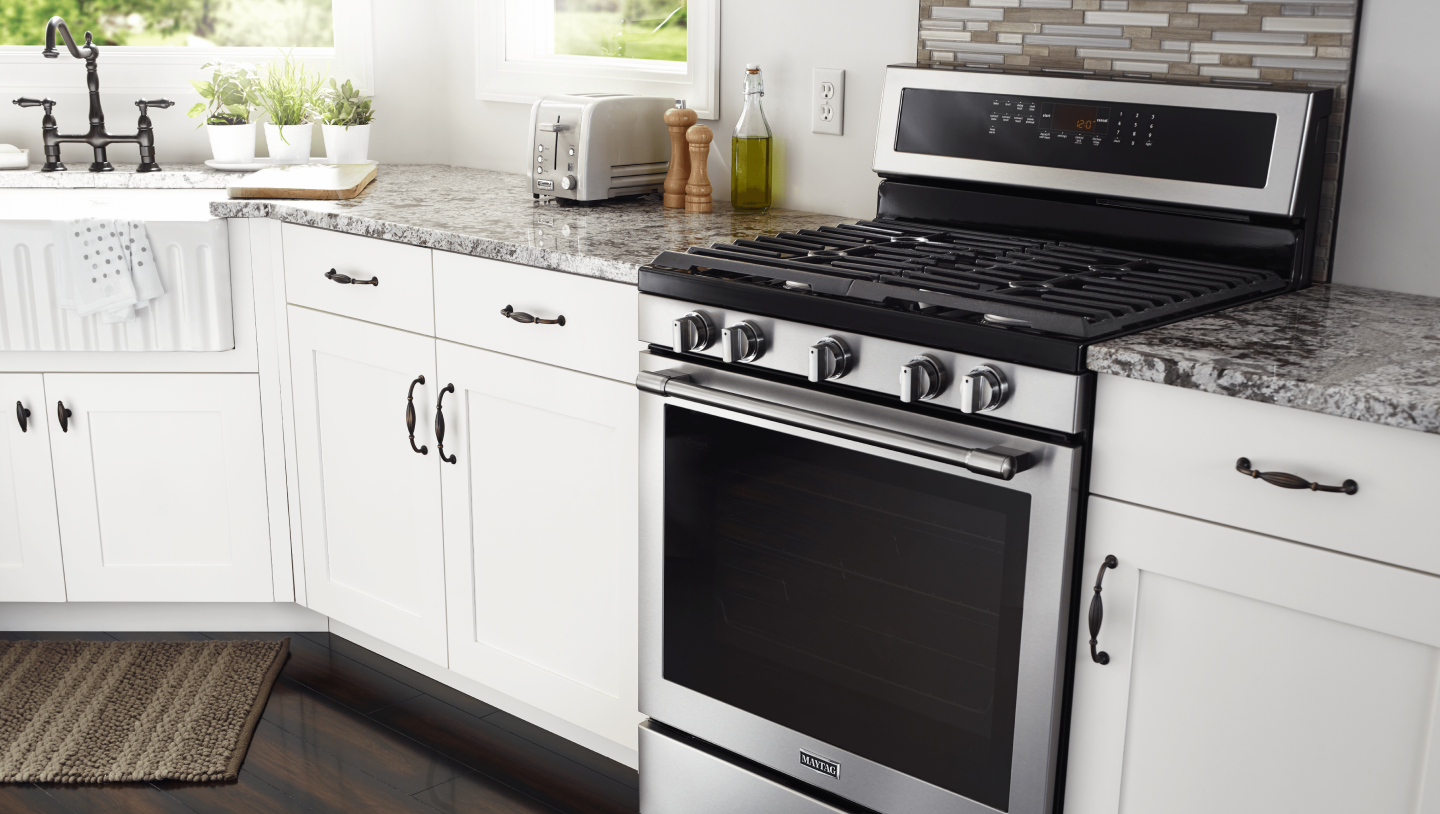

WHICH IS BETTER FOR YOU: A GAS OR ELECTRIC STOVE?
Ultimately, the decision between a gas or electric stove comes down to personal preference, cooking style and the set-up of your kitchen. Gas stoves offer responsive temperature control, which is particularly beneficial for cooking techniques that require immediate adjustments.
Radiant electric stoves heat up more slowly and lack the immediate temperature control of gas stoves. However, they can provide even, consistent heat that is ideal for baking and roasting. Electric stoves also feature a smooth, flat surface that is easier to clean than gas stovetops.
DO HOMEBUYERS PREFER GAS OR ELECTRIC STOVES?
Homebuyer preferences regarding gas or electric stoves can vary depending on the individual. Because this is such a personal preference, it may be hard to predict whether a homebuyer will prefer gas or electric stoves. You may want to choose an option based on the overall style of your kitchen. Gas stoves can bring a more commercial-feel to kitchens, complimenting contemporary or industrial styles while electric stoves are right at home in more traditional kitchens. Learn more about how to update your stove from gas to electric if you’re looking to make the switch.
Some homeowners prefer the more hands-on cooking experience offered by a gas range. Gas stoves offer instant heat and responsive temperature control, which can be appealing to homebuyers who enjoy cooking.
Other homebuyers prefer electric stoves, though, due to their ease of use and maintenance. Electric stoves with ceramic-glass cooktops have a smooth, flat surface that is easier to clean than a gas stovetop, and they can be seen as a more modern option by some home cooks.
BROWSE GAS AND ELECTRIC STOVES FROM MAYTAG BRAND
Getting just the kind of control and features you need is essential to making your time in the kitchen more pleasant and efficient. Weigh your options and bring home a stove that can handle whatever task you need to tackle — whether it’s baking, broiling or roasting. Browse select Maytag® models below, learn about options such as induction vs gas cooktops, or shop all Maytag® electric ranges and gas ranges. You can also reference our range buying guide to find the best range for your kitchen.
.png?fit=constrain&fmt=jpg&wid=2875)
GET MORE WITH A MAYTAG ACCOUNT
Sign in to explore
